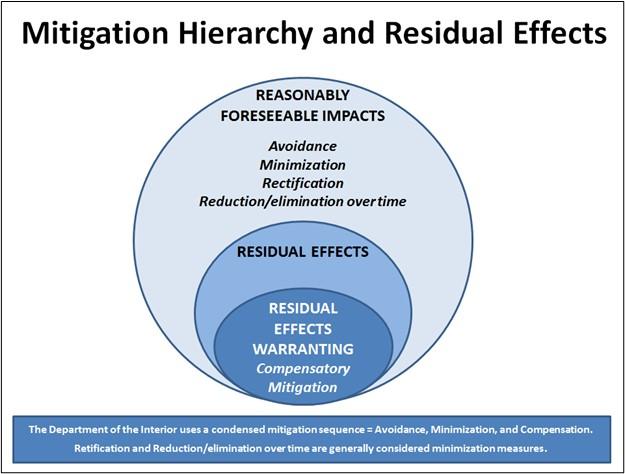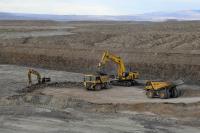
Mitigation
Supporting multiple use and sustained yield
Under the authority of the Federal Land Policy and Management Act (FLPMA), the BLM manages public lands and resources for multiple use and sustained yield. Mitigation of impacts from authorized land uses is key to meeting this statutory responsibility and ensuring public lands and resources are managed to provide benefits for present and future generations.
To authorize land uses in compliance with FLPMA, the BLM identifies reasonably foreseeable impacts of proposed activities on natural and cultural resources and integrates commensurate measures to avoid, minimize or compensate for those impacts into land use authorizations. The effectiveness and durability of mitigation activities are monitored, tracked, reported, and adaptively managed using science, data and tools, along with administrative and financial assurances, to ensure the mitigation achieves intended outcomes.
The BLM implements mitigation in a step-wise manner: first seeking ways to avoid impacts, then identifying strategies to minimize impacts. In cases when there may be remaining unavoidable, or residual, adverse impacts, the final land use authorization may include stipulations or terms to offset or compensate for those unavoidable impacts.
Compensatory mitigation for residual, unavoidable impacts is warranted to (1) comply with law, regulation and policy, (2) achieve objectives in a resource management plan (RMP), or (3) conserve important, scarce or sensitive resources. Compensatory mitigation is considered after all appropriate, practical avoidance and minimization has been proposed.
Mitigation standards define outcomes to achieve no net loss or a net-benefit for impacted resources, ensuring BLM lands are effectively managed for multiple use and sustained yield in alignment with FLPMA. Mitigation standards are generally identified in law, land use plans (RMP), and other decision documents and authorizations and supported by appropriate NEPA analysis.




